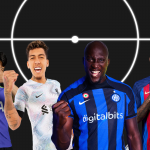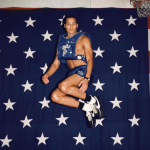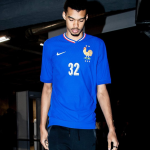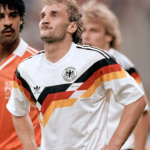
Nike used one template for all its top clubs
A choice in line with brand strategy but one that makes each team's aesthetic too similar

July 19th, 2022
"Let's abandon templates. For the 2020 kits, Nike designers had 65 frame options available ranging from necklines, sleeves, cuffs, placement of emblems, etc. From hand-drawn prints to custom fonts, each team's look will be its own." It was only 2020 when Nike, through the words of Heidi Burgett, senior director of Global Communication, announced that for the following season it would abandon the many much-discussed templates that were overly standardizing jersey production, in a move that seemed to change the production model for football kits forever.
The Eugene brand was still fresh from the unimaginable success of the kit for the Nigerian national team, which, according to some estimates, sold three million around the world and became a lifestyle item, and but more importantly from the many complaints caused by the increasingly similar jerseys made for top swoosh's European clubs. So the intention was to take risks, diversifying patterns and templates to please the demanding fans and at the same time trying to guess the right jersey that would become a trend off the pitch as well.
Only two years later, however, Nike seems to have returned to heavy use of its main template, the Vaporknit 2022, for all the major clubs. From Inter Milan to Barcelona, via Chelsea, Tottenham, and of course Paris Saint-Germain, the game jerseys for next season feature this arc that starts below the shoulders and runs across the upper chest. In some cases the break is stark, especially when it interrupts the stripes with a one-color block, in others it is almost imperceptible on the one-color jerseys but remains in the feeling of repetitiveness from which it is difficult to break out.
Nike has made bold designs, such as the wiggly stripes for Atletico Madrid's first jersey or the hypnotic pattern in Liverpool's away, or Tottenham's controversial second jersey that has been likened to a diving suit. Atletico Madrid's stripes bent like sea waves, while Barcelona's stripes regained their three-dimensionality, thanks to a geometric texture. In some cases, Nike chose the path of tradition, as with the Inter and Paris Saint-Germain jerseys, which respectively saw the abandonment of the scales seen last season in preference to the classic Nerazzurri stripes and the white, red, and blue stripe designed by Daniel Hechter. In others, like that of Chelsea's first jersey the template is obscured by the turquoise collar dedicated to historic coach Ted Drake, or as in that of Tottenham where the year-to-year repetition of total white has dried up any attempt at novelty.
So many different results that nevertheless have a common starting point, a template that Nike has reserved for its top European teams, unifying them as if they were the kits of a SuperLega sponsored by the US brand. And in an era in which finding the balance between identity and innovation is increasingly necessary, it is an important choice that pushes in the direction of performance, with jerseys that reflect the best of current technology but at the same time impose a shared standard that level the clubs esthetic. The use of a template has been a staple for decades in jersey design, creating some of the patterns that have defined the aesthetics of football and that Nike has decided to retrace. A path that limits each team's creativity in preference to a design consistency where the brand is more important than the club itself, a strategy that is perfectly in line with the strategy deployed in recent years by the US company but that may not find full satisfaction among teams and fans.












